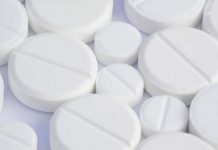HVAC is an essential aspect in pharmaceutical industry as factors like temperature, relative humidity and ventilation have a direct impact on the quality of the pharmaceutical product. The designing of the HVAC should be sorted out while design concept of facility is in progress as it is linked to the architectural layouts like air locks, doorways and lobbies. Once the HVAC system is properly designed and installed it not only helps to create the required room pressure differential cascades but also prevents the cross contamination. Basically an HVAC system works by transferring the heat and moisture into and out of the air and controls the level of the air pollutant either by removing them or diluting them to a particular level.
TECHNOLOGY OVERVIEW:
HVAC system varies according to the size and installation capacity within a facility but the basic components remain almost the same.

LAYOUT OF A TYPICAL HVAC SYSTEM:

HEATING SYSTEM:
The heat source is either a furnace or another popular choice is boilers that heat water for steam radiators, or forced-water systems with baseboard radiators, electric heat, and heat pumps. A furnace will generally operate on natural gas or propane, while a boiler will use gas or oil to heat the water. Furnaces are generally installed with central air conditioners. Heat pumps provide both heating and cooling. Some heating systems have an integrated water heating system. Another option is a hydronic heating system also called as radiant floor. These use piping under a floor, and are made up of flexible tubes that are filled with water or a glycol solution.
COOLING SYSTEM:
The purpose of cooling equipment is to chill the water for pumping to cooling coils. From one end the treated air is then blown over the chilled water coils into the space to be cooled through the ventilation system. As part of the refrigeration cycle in the chiller, heat must also be rejected from the system via a cooling tower or condenser.
DUCT LINES AND VENTILATION:
The ducts are used within the system to circulate both hot and chilled water in the building to the required areas. The stale air is expelled by using a separate duct line. The installation of duct lines is an important part therefore location and material type is considered at the time of designing of the HVAC system.
THERMOSTAT:
The thermostat (HVAC Controller) is installed to turn equipment on or off and to adjust the chillers and boilers, air and water flow rates, temperature and pressures. This also make the components work efficiently through the means of regulation of required conditions. A controller incorporating one or more temperature sensors inside the workspace sends a signal to the heating or cooling coils to activate.If there is a demand for heating or cooling then the controls may also send a signal to the chiller and boiler to operate as required. There are often other control panels on the chiller or boiler too, allowing users to have greater control.










